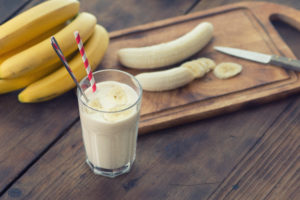How physical movement promotes positive digestion
Exercise has so many benefits to our physical and mental wellbeing.
It releases happy hormones to make us feel great, can help reduce our blood pressure, prevent cardiovascular disease and can assist us in building strong bones and muscles. Exercise also has a positive impact on digestion by promoting good gut and bowel health. However, there are a few tips and tricks to be aware of when it comes to exercise and digestion to help avoid any discomfort!
How our digestion changes when we exercise
When we engage in moderate to strenuous exercise, our body delivers more blood, nutrients and oxygen to our muscles that are working hardest. Instead of delivering blood to our intestines to help with digestion, more blood is directed to our legs or arms, so we can keep exercising. If you’re doing a challenging workout, you may experience some uncomfortable side effects as our digestion rapidly slows down. Side effects may include abdominal cramping, nausea, heartburn or needing to find a toilet urgently!
This doesn’t mean we should start eliminating exercise from our daily routines for fear of experiencing side effects. Exercise in the long term actually promotes good digestion by preventing constipation. As long as we consider a few essential things, we’ll give ourselves the best chance of exercising symptom-free.
Tips for reducing digestive issues with exercise
Having a large, fatty meal before exercise may likely result in some of the symptoms above. If we consume a large meal, particularly one that contains high amounts of fat, it’s best to wait 2-3 hours before doing exercise. High fibre and high protein meals can also lead to discomfort when exercising, so it’s best to opt for a low fibre, carbohydrate containing snack just before we work out.
Low fibre, low fat pre-exercise snack ideas:
- Banana
- Low fat yoghurt
- Raisin toast
- A small portion of pasta
- A small fruit smoothie – try our traditional banana smoothie recipe!
Dehydration can also exacerbate some of the symptoms above, so it’s important to be well hydrated with water before a workout. The amount of water required will depend on the time of day you exercise, as well as external factors like the weather. Aim to avoid the feeling of dehydration, which can include thirst, dry mouth or headaches, throughout the day. Soft drinks and high sugar drinks can also cause stomach upsets, so it’s best to stick with water as the source of hydration!
Traditional Banana Smoothie
Serves: 3
Ingredients:
- 1 cup reduced fat milk
- 2 bananas
- 3 tablespoons reduced fat Greek yoghurt
- ½ teaspoon cinnamon
- 1 tablespoon honey (optional)
Method:
- Place all ingredients into a blender and blend until smooth. If smoothie is too thick, add more liquid to reach the desired consistency.
- Pour into glasses and serve immediately.
References:
- The Better Health Channel. Physical activity – it’s important [Internet]. Department of Health, State Government of Victoria, Australia © Copyright State of Victoria 2020. Updated 2018 Aug 26 [cited 2022 Jun 15]. Available from: https://www.betterhealth.vic.gov.au/health/healthyliving/physical-activity-its-important
- Sports Dietitians Australia. Eating and Drinking Before Exercise [Internet]. Cited 2022 June 15. Available from: https://www.sportsdietitians.com.au/factsheets/fuelling-recovery/eating-drinking-sport/
- Sports Dietitians Australia. Runner’s gut [Internet]. Cited 2022 June 15. Available from: https://www.sportsdietitians.com.au/factsheets/fuelling-recovery/runners-gut/
- The Better Health Channel. Constipation [Internet]. Department of Health, State Government of Victoria, Australia © Copyright State of Victoria 2020. Updated 2014 Aug 31 [cited 2022 Jun 15]. Available from: https://www.betterhealth.vic.gov.au/health/conditionsandtreatments/constipation
Last updated: September 26, 2023 at: 11:42 pm

